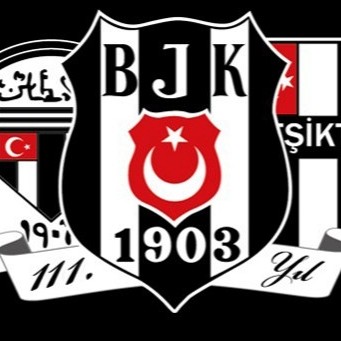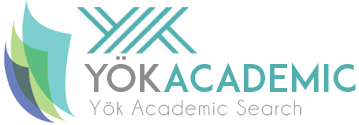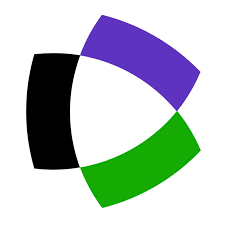Research Articles
Issue Editorial Board

Mustafa Aslan completed his undergraduate education at Cyprus International University, Radio TV Cinema Department. Aslan, has worked in many positions such as sound technician, cameraman, editing director, director and producer in television channels. Between 2005 and 2008, he worked with TRNC President Rauf Raif Denktaş and directed the Denktaş's Agenda Program. Aslan, who completed his doctorate in 2015, was appointed as an Assistant Professor to Aydın Adnan Menderes University (ADU) Faculty of Communication in the same year. Between 2014-2019, he served as ADÜ Rector Advisor and General Secretary. In 2020, he was appointed as an Associate Professor at Sakarya University, Faculty of Communication, Radio TV Cinema Department. He founded the Film Research Association with his academic friend and was elected as the president of the association. Aslan is still working as the head of the Department of Radio TV Cinema at Sakarya University, Faculty of Communication.

1982 doğumlu Tunç Yıldırım, Saint-Michel lisesini bitirdikten sonra Marmara Üniversitesi İletişim Fakültesi RTS Bölümü’nden lisans diplomasını 2004’te aldı. 2005’te Fransız Hükümeti (BGF) ve Türk Eğitim Vakfı (TEV) ortak burslu öğrencisi olarak Paris I Panthéon-Sorbonne Üniversitesi Sanat ve Arkeoloji Enstitüsü’nde Sinema Tarihi, Sosyolojisi ve Mitolojisi alanında yüksek lisans (DEA) yaptı. 2011’de Paris I Panthéon-Sorbonne Üniversitesi Sanat Tarihi Doktora Okulu Sinema Bölümü’nde doktor oldu.
TÜBİTAK (BİDEP-2219) yurtdışı doktora sonrası araştırma burslusu olarak Paris I Panthéon-Sorbonne Üniversitesi'nde 15.02.19-15.08.19 arasında misafir araştırmacı ve öğretim üyesi olarak görev yaptı, INHA’da (Institut National d’Histoire de l’Art) seminer verdi ve Cinémathèque Française arşivlerinde Georges Sadoul fonunda araştırmalar yaptı.
Araştırma alanları Türk sinemasının Yeşilçam döneminin kültürel ve estetik tarihleri, sinema tarihyazımı, sinema ve tarih ilişkileri, sinema türleri, filmlerin eleştirel alımlaması, ilk modern Türk sinema araştırmacısı Nijat Özön’ün sinema tarihçiliği ve Metin Erksan sinemasının kültürel ve estetik perspektiflerden çözümlenmesi üzerine yoğunlaşmıştır. Sinema araştırmaları disiplinindeki bilimsel çalışmaları 2009-2025 yılları arasında Türkiye, Fransa ve Kanada’da hem yazılı hem de sözlü olarak yayımlanmıştır.
Yıldırım, Türkiye’nin ilk uzman/bilimsel sinema araştırmaları dergisi Sinecine’nin Danışma Kurulu üyesi ve aynı disiplinde uzmanlaşan Türkiye Film Araştırmaları Dergisi’nin Yayın Kurulu üyesidir. Ayrıca; Düzce Üniversitesi’ne bağlı Tykhe Sanat ve Tasarım Dergisi’nin üç yıl boyunca sinema alan editörü olarak görev yapmıştır.
Yıldırım 2014’te Une période emblématique du cinéma turc : Le cinéma de Yeşilçam (1948-1971), 2016’da Türk Sinemasının Estetik Tarihi: Standart Türlere Giriş (1948-1959), 2017’de Sinemacı ve Tarihçi Metin Erksan: Dokuz Dağın Efesi’nde Sosyal Eşkıyalık Meselesi ve 2021'de Sinema Tarihine Giriş: Büyük Estetik Ekoller, Tarzlar, Akımlar, Hareketler kitaplarını neşretmiştir.
2023'de TÜBİTAK tarafından özel olarak açılan "Cumhuriyetimizin 100. Yılı Özel Çağrısı" programından kabul alan on beş aylık sinema tarihi araştırma projesinin yürütücüsüdür (https://tubitak.gov.tr/sites/default/files/26720/projects_decided_to_be_supported_0.pdf). 2019'da “sinema bilim alanında” doçent olan Yıldırım, 2020’den itibaren Düzce Üniversitesi Sanat, Tasarım ve Mimarlık Fakültesi Radyo, Televizyon ve Sinema Bölümü'nde çalışmaktadır.
Aim & Scope
Turkish Journal of Film Studies, "Based on an academic idea at the beginning of cinema, and its uses in cinema. Considering creating new areas of discussion by publishing academic articles such as film criticism, graduation, book analysis, reviews, thoughts, etc., including articles about this purpose.
Turkish Journal of Film Studies is published twice a year, in June and December. Manuscripts that have already been published in the journal, have been accepted for publication, or are being evaluated for publication are not accepted. Studies sent to the journal are pre-evaluated by the editorial board, and studies deemed appropriate are published with the positive reports of at least two referees. The journal is open only to scientific and academic articles in the field of cinema.
Author Guidelines
In order for the articles submitted for evaluation to be accepted, it is required that they have not been published anywhere before. Submitted articles are first reviewed by the editorial board. If the content and format of the articles submitted to the journal are not deemed appropriate, the journal editorial board may reject them. Care should be taken to present articles as follows:
1. All studies sent to our journal for evaluation must be prepared using a sample article template (click to download the template). After the template is downloaded, the texts should be adapted to the relevant parts of the template without making any changes to the template. Studies that do not comply with the template/are not prepared using the template will be returned to the author(s) without being evaluated.
2. Manuscripts to be sent to the magazine should be written using MS Office Word program, in A4 size, with 2.5 cm margins from the right, left and top edges, and 3 cm margins from the bottom edge, in normal font style, in Times New Roman font, first 0, then 6 pt, 1. It should be prepared with line spacing and justified. Turkish and English titles of the studies should be written left-aligned, with the first letter of each word capitalized, 14 points and bold. Abstract, Introduction, Conclusion, References and all other main headings should be left aligned, all capital letters, 14 point and bold. In second-level subheadings, only the first letter of the words should be capitalized and written in 12-point font and bold.
3. Turkish and English summary texts should be 11 points. Studies should generally follow the flow of Turkish Title, Abstract, Keywords, English Title, Abstract, Keywords, Introduction, Main Text, Conclusion and References. Studies should consist of at least 5000 and at most 10000 words. Each study should include a Turkish and English abstract of at least 150 and at most 250 words, and Keywords should consist of at least 5 and at most 7 words. Abstracts for studies prepared in Turkish should be in English, and abstracts for studies prepared in English should be in Turkish. The summaries prepared should briefly include the purpose, scope, problem, method, population/sample group of the study and the important findings and results obtained.
4. In Turkish articles sent to the journal, an extended English abstract of at least 750 and at most 1000 words should be added under the extended abstract heading, apart from the English abstract section. Subheadings within the extended abstract may vary depending on the type of study.
5. If the tables, figures, graphs and images used in the text are not originally created by the author(s), they can be used in the text by citing the source. Tables, graphs and images used in the text should be listed as Table 1, Table 2/ Graph 1, Graph 2/ Image 1, Image 2/ Figure 1, Figure 2... etc., and titles should be written above the tables and graphs. Titles should be aligned left and the first words used in the title should be capitalized and italicized. The source of the tables and graphs should be stated by adding a "Source" heading, aligned to the left, right below non-original tables, graphs and images.
6. If there is an institution supporting the study, the supporting institution information should be stated as a footnote on the same page, by placing (*) after the last word of the article title.
7. When citing the text, the 7th edition of APA (American Psychological Association), which is the referencing method for the text, should be used. https://apastyle.apa.org/style-grammar-guidelines/references/examples
Ethical Principles and Publication Policy
Turkish Journal of Film Studies adheres to national and international standards regarding research and publication ethics. It complies with the Press Law (a), the Law on Intellectual and Artistic Works (b) and the Higher Education Institutions Scientific Research and Publication Ethics Directive (c). It has also adopted the International Ethical Publishing Principles (d) published by the Committee on Publication Ethics (COPE), Directory of Open Access Journals (DOAJ), Open Access Scholarly Publishers Association (OASPA) and World Association of Medical Editors (WAME).
a) Press Law
b) Law on Intellectual and Artistic Works
c) Higher Education Institutions Scientific Research and Publication Ethics Directive
d) Transparency and Best Practice Principles in Academic Publishing
Publication of Studies Based on Surveys and Interviews
Turkish Journal of Film Studies adopts the principles of the Committee on Publication Ethics (COPE) "Code of Conduct and Best Practice Guidelines for Journal Editors" and "Code of Conduct for Journal Publishers" in order to create ethical assurance in scientific periodical publishing. In this context, the following points must be observed in studies submitted to the journal:
1) For research conducted in all branches of science that require ethics committee permission (ethics committee approval must be obtained, this approval must be stated and documented in the article.
2) In research requiring ethics committee permission, information about the permission (committee name, date and issue number) can be found in the method section, as well as on one of the first/last pages of the article; In case reports, information about signing the informed consent/consent form should be included in the article. The publication processes followed in the publication form the basis for the development and distribution of information in an impartial and respectful manner. The processes followed in this regard are directly reflected in the quality of the work of the authors and the institutions that support the authors. Peer-reviewed studies are studies that embody and support the scientific method. At this point, it is important that all stakeholders of the process (authors, readers, researchers, publisher, referees, editors) comply with the standards regarding ethical principles.
Special Issue Publishing Policy
A special issue may be published once a year upon the request of the Editorial Board of my journal. Articles submitted for inclusion in the special issue are first subjected to editorial preliminary review. It is then examined for compliance with the journal's spelling rules and similarity scanning is performed to prevent plagiarism. After these stages, it is taken into the peer evaluation process in which the double-blind model is used.
Correction, Retraction, Expression of Concern
Editors may consider publishing corrections if minor errors are identified in the published article that do not affect the findings, interpretations, or conclusions. Editors should consider retracting the manuscript in cases of major errors/violations that invalidate the findings and conclusions. If there is a possibility of misuse of research or publication by the authors; If there is evidence that the findings are unreliable and the authors' institutions are not investigating the incident, or if the potential investigation appears unfair or inconclusive, editors should consider publishing an expression of concern. COPE and ICJME guidelines regarding corrections, retractions or expressions of concern are taken into account.
Plagiarism Action Plan and Journal Precautions
The journal respects intellectual property and aims to protect and promote the original work of its authors. Articles containing plagiarism are against the standards of quality, research, and innovation. Therefore, all authors who submit articles to the journal are expected to comply with ethical standards and avoid plagiarism in any form. If an author is suspected of plagiarism in a submitted or published article, the journal's Ethics Editor reviews the work first. This work is then reviewed by the Editorial Board. The Journal then contacts the author(s) to submit their comments within two weeks. If the journal does not receive any response from the author within the specified time, it requests the investigation of the claim by contacting the university to which the author is affiliated. The journal will take the following serious precautions against published articles that are found to contain plagiarism.
1. The journal will immediately contact the university to which the author(s) are affiliated, in order to take final action against the related author.
2. The journal will remove the PDF copy of the published article from its website and disable all links to the full-text article. The phrase Plagiarized Article will be added to the title of the published article.
3. The journal will disable the author's account and reject all future submissions by the author for a period of 3 years.
This journal checks for plagiarism
Submitted manuscripts that pass preliminary control are scanned for plagiarism using TURNITIN software. If plagiarism/self-plagiarism will be found authors will be informed. Editors may resubmit the manuscript for similarity check at any peer-review or production stage if required. High similarity scores may lead to rejection of a manuscript before and even after acceptance. The percentage of similarity score taken from each article, the overall similarity score is generally expected to be less than 15%.
Publication Ethics Policy
This journal checks for plagiarism in studies submitted for review. The journal adheres to national and international standards on research and publication ethics. It complies with the Press Law, the Law on Intellectual and Artistic Works and the Directive on Scientific Research and Publication Ethics for Higher Education Institutions. It has also adopted the International Ethical Publishing Principles published by the Committee on Publication Ethics (COPE), Directory of Open Access Journals (DOAJ), Open Access Scholarly Publishers Association (OASPA) and World Association of Medical Editors (WAME).
1. Authorship
• The list of references must be complete
• Plagiarism and fake data should not be included
• The same research should not be attempted to be published in more than one journal, and scientific research and publication ethics should be observed. Actions against science research and publication ethics are as follows:
a) Plagiarism: Presenting the ideas, methods, data, applications, writings, figures or works of others as their own work, in whole or in part, without attributing their owners in accordance with scientific rules,
b) Forgery: Producing data that is not based on research, editing or changing the presented or published work based on unreal data, reporting or publishing these, presenting a research that has not been conducted as if it has been done,
c) Distortion: Falsifying research records and obtained data, presenting methods, devices and materials that were not used in the research as if they were used, not taking into consideration data that does not comply with the research hypothesis, tampering with data and/or results to fit the relevant theory or assumptions, and using the support received from people and organizations. falsifying or shaping research results in line with one's interests,
ç) Re-publication: Presenting more than one work containing the same results of a research as separate works in associate professorship exam evaluations and academic promotions,
d) Slicing: Presenting the results of a research as separate works in associate professorship exam evaluations and academic promotions by dividing it into parts inappropriately, in a way that disrupts the integrity of the research, and by publishing multiple publications without citing each other
e) Unfair authorship: Including people who do not have an active contribution among the authors, not including people who have an active contribution among the authors, changing the author order in an unjustified and inappropriate way, removing the names of those who have an active contribution from the work during publication or in subsequent editions, increasing their influence even though they do not have an active contribution. to include his name among the writers by using
f) Other types of ethical violations: Not clearly stating the supporting persons, institutions or organizations and their contributions to the research in the publications of research conducted with support, not complying with ethical rules in research conducted on humans and animals, not respecting patient rights in their publications, not using a document assigned to review as a referee. Sharing the information contained in the work with others before it is published, using the resources, places, facilities and devices provided or allocated for scientific research for purposes other than their intended purpose, making completely unfounded, unfounded and deliberate accusations of ethical violation (YÖK Scientific Research and Publication Ethics Directive, Article 8).
2. Author's Responsibilities
• All authors must contribute significantly to the research.
• It is required to declare that all data in the article is real and original.
• All authors must ensure retractions and correction of errors.
3. Responsibilities of Referees
• Evaluations should be unbiased.
• Reviewers must not have a conflict of interest with the research, authors and/or research funders.
• Referees should cite relevant published but not cited works.
• Checked articles must be kept confidential.
4. Editorial Responsibilities
• Editors have full responsibility and authority to accept or reject an article.
• Editors should not have a conflict of interest regarding the articles they accept or reject.
• Only articles that will contribute to the field should be accepted.
• It should support the release or retraction of corrections when errors are found.
• Referees must keep their names confidential and prevent plagiarism/fake data. The referee process is at the center of the success of scientific publishing. It is part of our commitment to protect and improve the peer-review process, and Turkish Journal of Film Studies has an obligation to assist the scientific community in all cases regarding publishing ethics, especially in cases of questionable, duplicate publications or plagiarism. When the reader notices a significant error or inaccuracy in an article published in Eskiyeni or has any complaint regarding the editorial content (plagiarism, duplicate articles, etc.), he or she can make a complaint by sending an e-mail to turkishjournaloffilmstudies@gmail.com. We welcome complaints as they provide an opportunity for us to improve, and we aim to respond quickly and constructively.
Revealing Plagiarism
Articles submitted for publication in Turkish Film Research Journal are subject to double-blind peer review by at least two referees. In addition, through iThenticate, which is used to detect plagiarism, it is confirmed that the articles have not been published before and do not contain plagiarism.
Preliminary Review and Plagiarism Screening:
Study; It is reviewed by the editor for compliance with the journal publishing principles and academic writing rules and is scanned for plagiarism using the iThenticate program. The plagiarism similarity rate is required to be less than 15%. The preliminary review is completed within 15 days at most.
Referee Process (Academic Evaluation):
The study, which is reviewed by the editor, is submitted to the evaluation of at least two referees who have a doctoral thesis, book or article on the subject. The arbitration process is carried out confidentially within the framework of double-blind arbitration. The referee is requested to state his/her views and opinions about the study he/she reviewed either in the text or to justify it with an explanation of at least 150 words on the online referee form. The author is given the right to object and defend his/her opinions if he/she disagrees with the referee's opinions. It ensures mutual communication between the editor, author and referee while preserving confidentiality. If both referee reports are positive, the study is submitted to the Editorial Board with a proposal to consider its publication. If one of the two referees has a negative opinion, the study is sent to a third referee. Studies can be published with the positive decision of at least two referees. Translated articles; It is sent to language and relevant field experts to be evaluated in terms of conformity to the original, appropriate use of field concepts and language. Translations that experts have a negative opinion about are not published. Book and symposium evaluations and publication of doctoral thesis summaries are decided upon the evaluation of the editor.
Revision Phase:
If the referees request revisions to the text they review, relevant reports are sent to the author and he is asked to correct his work. It is requested that the correction be completed within 20 days at most. The author presents the corrections he made to the field editor, highlighting them in red.
Referee Control:
The referee who requests correction checks whether the author has made the requested corrections in the text. The checking process is completed within 7 days at most.
Turkish Language Control:
The works that pass through the referee process are examined by the Turkish Language Editor and, if necessary, corrections are requested from the author. The checking process is completed within a maximum of 20 days.
English Language Check:
Studies that pass Turkish language control are examined by the English Language Editor and, if necessary, corrections are requested from the author. The control process is completed within 15 days at most.
Editorial Board Review:
Articles that have passed technical, academic and linguistic reviews are reviewed by the Editorial Board and their final publication status is decided. In case of objection from the members, the Board decides by majority vote.
Typesetting and Layout Stage:
The typeset and layout of the works decided to be published by the Editorial Board are made ready for publication. Data Submission to National and International Indexes: The printed copy of the published issue will be sent to reference libraries at home and abroad within 60 days at the latest. The article metadata is transmitted to the relevant indexes within 15 days.
Price Policy
There are NO PUBLICATION FEES (article processing charges, editorial processing charges, language editing fees, colour charges, submission fees, page charges, membership fees, print subscription costs, other supplementary charges, all other charges) to publish with this journal. All expenses of the journal are covered by Publisher.
Submission of articles to the journal is always open.






